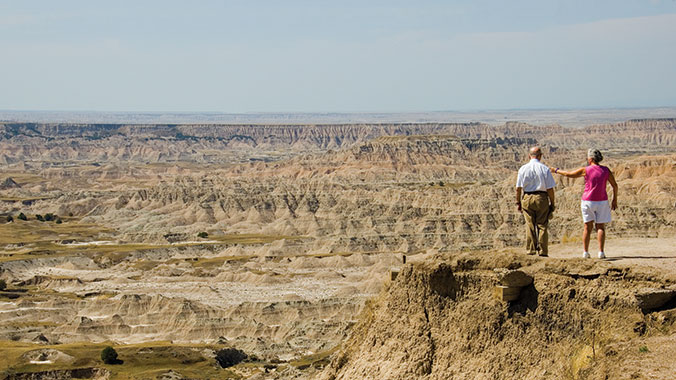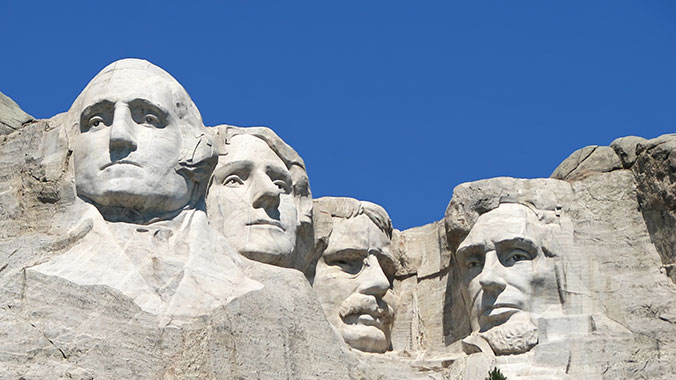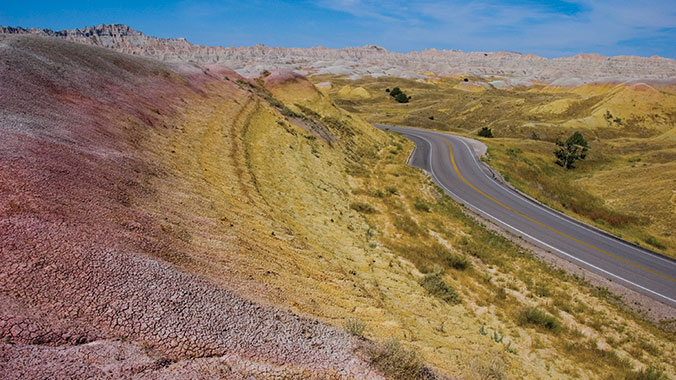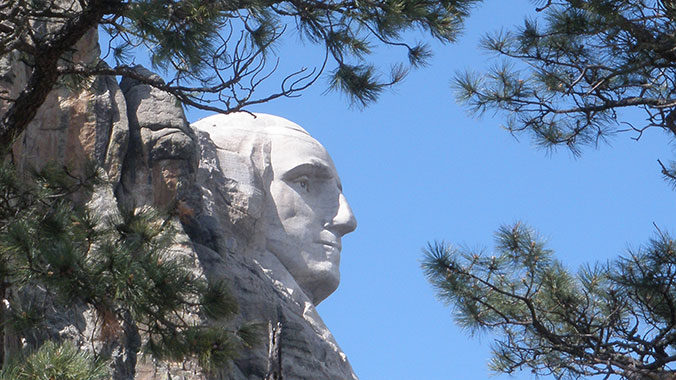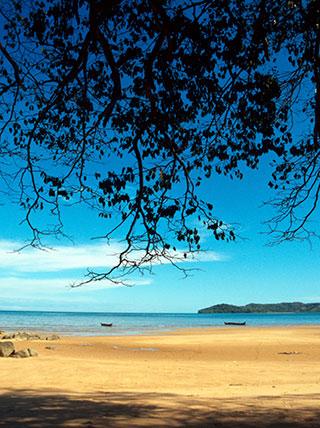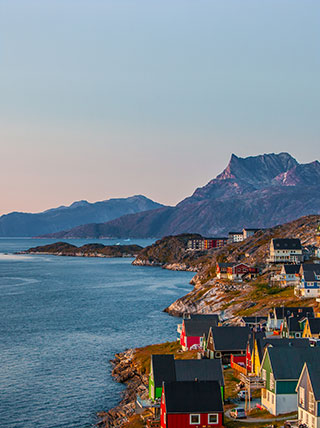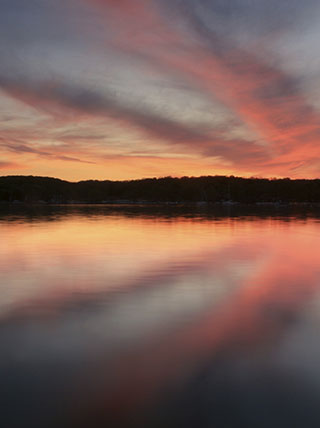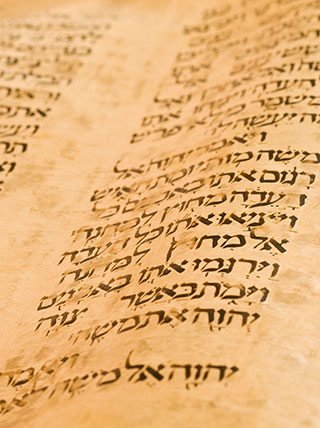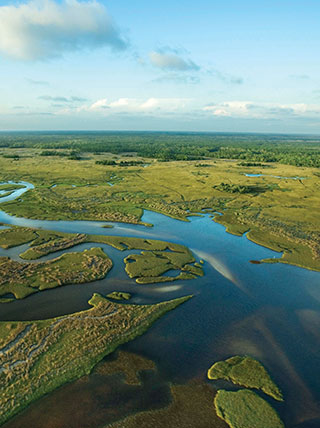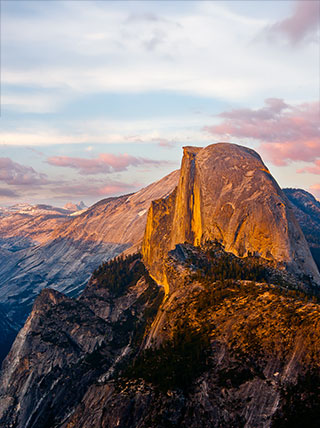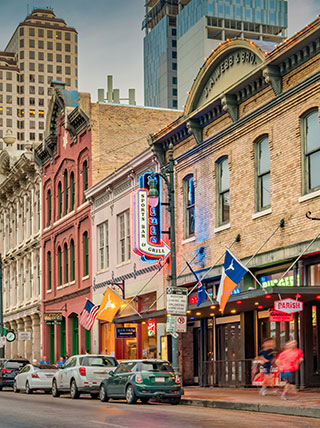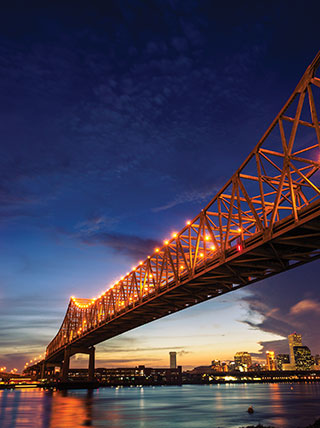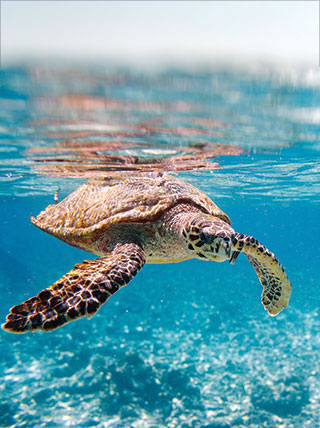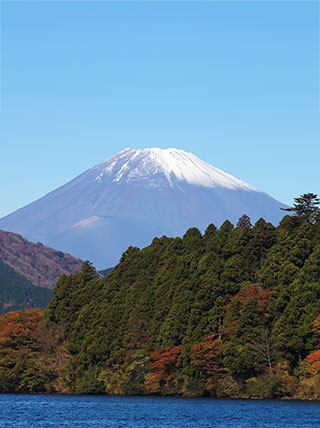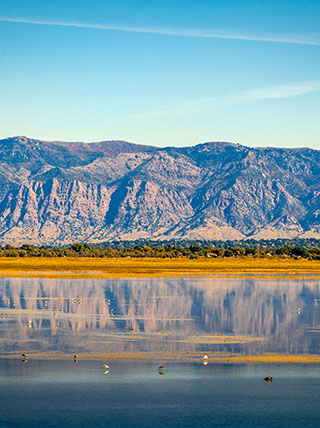South Dakota
The Best of Mount Rushmore, the Black Hills and Badlands
Program No. 13160RJ
Discover South Dakota’s beautiful Black Hills and Badlands, where bison mosey through roadside meadows and hand-carved mountains tower over vast stretches of untouched wilderness.
Enroll with Confidence
We want your Road Scholar learning adventure to be something to look forward to—not worry about. Learn more
Protecting the Environment
We offset a portion of the emissions created by your travel. Learn more
Itinerary
While we make every effort to ensure the accuracy of our published materials, programs are typically advertised more than a year prior to their start date.
Read More.
While we make every effort to ensure the accuracy of our published materials, programs are typically advertised more than a year prior to their start date. As a result, some program activities, schedules, accommodations, personnel, and other logistics occasionally change due to local conditions or circumstances. Should a major change occur, we will make every effort to alert you. For less significant changes, we will update you during orientation. Thank you for your understanding.
Duration
7 days
6 nights
What's Included
16 meals (
6B, 4L, 6D
)
6 expert-led lectures
11 expert-led field trips
An experienced Group Leader
6 nights of accommodations
Taxes and customary gratuity
Road Scholar Assurance Plan
Day
1
Check-in, Orientation, Welcome Dinner
Location:
Keystone, SD
Meals:
D
Stay:
K Bar S Lodge
Activity Note
Lodge check-in from 3:00 p.m. Remember to bring your nametag.
Afternoon:
At the time of check-in, collect your Road Scholar welcome packet from the front desk. In the packet you will find updated information confirming the time and location of orientation. If you arrive late, please locate your Group Leader and let them know you have arrived. Orientation: 4:30 p.m. The Group Leader will greet everyone and lead introductions. They will review the up-to-date program schedule, discuss roles and responsibilities, logistics, safety guidelines, emergency procedures, and answer questions. There may be some light paperwork at the end of the orientation session. Lectures and field trips will be led by local experts and knowledgeable Group Leaders. Unless specified otherwise, transportation will be provided via motorcoach that will require going up/down a few steps when getting on/off. Evening programs and one morning program will take place in a meeting room at the Lodge. Periods in the schedule designated as “Free time” and “At leisure” offer opportunities to do what you like and make your experience even more meaningful and memorable according to your personal preferences. The Group Leader will be happy to offer suggestions. Program activities, schedules, personnel, and indicated distances or times may change due to local circumstances/conditions. In the event of changes, we will alert you as quickly as possible. Thank you for your understanding.
Dinner:
At the Lodge.
Evening:
At leisure. Continue getting to know your fellow participants, settle in, and get a good night’s rest for the day ahead.
Day
2
High Plains Center, Homestake Mine, Natural Resources
Location:
Keystone, SD
Meals:
B,L,D
Stay:
K Bar S Lodge
Activity Note
Getting on/off a motorcoach; driving about 120 miles throughout the day, approximately 2 hours total riding time. Walking about 1/2 mile indoors and out, standing up to 1/2 hour at a time; stairs at museums and historic buildings, groomed paths.
Breakfast:
At the Lodge.
Morning:
We’ll board a motorcoach and travel to the High Plains Western Heritage Center for an expert-led field trip. The center includes a Five-State Regional Museum founded to honor the Old West pioneers of North Dakota, South Dakota, Montana, Wyoming, and Nebraska. There are more than 20,000 square feet of exhibits featuring Western art, artifacts, and memorabilia including the original Spearfish to Deadwood Stagecoach, a turn-of-the-century kitchen, saddle shop, and a blacksmith shop. Forestry, mining, ranching, and rodeo are also represented. Outdoor displays feature Longhorn cattle, a furnished log cabin, rural schoolhouse, and antique farm equipment. After our exploration of early Western settlement in South Dakota, we’ll move to the theater for a historical representation program interpreting one of South Dakota’s early pioneers.
Lunch:
At the Western Heritage Center, catered by a local restaurant.
Afternoon:
Next, we’ll visit the historic town of Deadwood. While the wild and cantankerous characters of the early Deadwood era are long gone, their spirit and legend live on. Led by our expert Group Leader, we’ll learn about Deadwood’s beginning, its rough and rowdy days, and how it’s evolved into the town it is today. Following our time in Deadwood, we’ll board the motorcoach and travel a short distance to Deadwood’s sister city of Lead – pronounced “leed.” Lead has played a pivotal role in the history of the Black Hills. Home to the Homestake Gold Mine, the streets of Lead tell a tale as rich as the gold mined from its hills. The Homestake Gold Mine was one of the early enterprises associated with the Gold Rush of 1876. Gold mining from Homestake ceased several years ago due to low gold prices but has begun a new life serving as a laboratory 4,850 feet underground. The lab is working towards a revolution in physics by studying neutrinos. We’ll be joined by staff of the Education and Outreach Program for the Sanford Underground Research Facility who will present on the history of the mine, its significance, and how a historic gold mine has become one of the leading, state-of-the-art scientific neutrino labs in the world. We’ll then return to the Lodge.
Dinner:
At the Lodge.
Evening:
We’ll be joined at the Lodge by a local expert for a distinctive look into the management of natural resources in the Black Hills.
Day
3
Mount Rushmore, Journey Museum, Lighting Ceremony
Location:
Keystone, SD
Meals:
B,D
Stay:
K Bar S Lodge
Activity Note
Getting on/off a motorcoach; driving about 70 miles throughout the day, approximately 2 hours total riding time. Walking about 1/2 mile indoors and out, standing up to 1 hour at a time; stairs, groomed paths.
Breakfast:
At the Lodge.
Morning:
We will board the motorcoach with our expert Group Leader and set out on a field trip to explore the United States’ Shrine of Democracy: Mount Rushmore National Memorial. Danish-American sculptor Gutzon Borglum, the creator of Mount Rushmore, wrote: “The purpose of the memorial is to communicate the founding, expansion, preservation, and unification of the United States with colossal statues of Washington, Jefferson, Lincoln, and Theodore Roosevelt.” Borglum intended his monumental sculpture to be not only a memorial to four of our greatest Presidents, but a Shrine to Democracy. Why these four? Washington led the nascent United States to win independence from Great Britain. Jefferson was the author of the Declaration of Independence. Roosevelt the “trust buster” ensured the rights of working people and was instrumental in building the Panama Canal. Lincoln led the country through the Civil War. Borglum began work in 1927 and continued until his death in 1941, when his son, Lincoln Borglum, took it on and ended work later that year. We will have an opportunity to expand our exploration of Mount Rushmore with an elective, independent short walk on a portion of the Presidential Trail to Borglum’s studio. Interpretive signage along the way will illuminate more about the monument, its construction, and the artist whose vision produced one of America’s most iconic symbols. Next, we’ll travel into Rapid City for independent exploration. Chosen as the “Most Patriotic City” by USA Today readers, we’ll be greeted by the “City of Presidents” — a 20-square-block section of historic downtown with life-size bronze statues of all of the past presidents along streets and sidewalks. It was begun in 2000 to honor the legacy of the American presidency. The Group Leader will hand out an interpretive walking brochure of the statues and will also offer other suggestions of galleries and cultural sites to visit during our self-directed field trip.
Lunch:
This meal has been excluded from the program cost and is on your own to enjoy what you like in downtown Rapid City. The Group Leader will be happy to offer suggestions.
Afternoon:
We’ll gather at an announced time and place and set out for a field trip to the Journey Museum. With by our Group Leader and museum docents, we’ll learn more about the Black Hills and surrounding area through the museum’s four major collections that provide a metaphorical journey into the past. The Journey Museum brings into focus a cogent story of billions of years of eruption, exploration, evolution, conflict and change. A tectonic shift deep inside the earth 2.5 billion years ago violently thrust up the land now known as the Black Hills into being. One of the oldest mountain ranges in the world, they have been worn down by the ravages of time from a height that was greater than the Matterhorn, thereby exposing the fine granite suitable for carving images into rock. Once on the edge of a great inland sea, this part of what is now the Great Plains was home to ancient dinosaurs. The Journey helps bring them back to relevance as we understand their time in this place. Prehistoric people came here when ice still held sway over most of North America and it would be another 10,000 years before the arrival of current Native Americans. Our experience at the Journey Museum will help us understand their life before the arrival of the white man. As we continue our exploration, we’ll begin to comprehend their changing world with the arrival of gold seekers and settlers who were intent on building a future in Dakota Territory. We’ll travel back to the Lodge after our field trip.
Dinner:
At the Lodge.
Evening:
We'll ride the coach back the short distance to Mount Rushmore and join a park ranger in the park's outdoor amphitheater for an inspirational 45-minute program focusing on the presidents, patriotism, and the nation's history. Subject to weather.
Day
4
Custer State Park, Crazy Horse Memorial, Indigenous Dance
Location:
Keystone, SD
Meals:
B,L,D
Stay:
K Bar S Lodge
Activity Note
Getting on/off a motorcoach; driving about 100 miles throughout the day, approximately 4 hours riding time. Walking about 1 mile indoors and out, standing up to 1 hour at a time; groomed paths, some stairs.
Breakfast:
At the Lodge.
Morning:
We will explore Custer State Park with commentary from our expert Group Leader during a scenic motorcoach drive around the Wildlife Loop Road. The park’s pine forests, grassy meadows, and towers of granite offer spectacular views while also providing a remarkable, lush sanctuary for the park’s four-legged residents. Nearly 1,500 magnificent bison, along with fleet pronghorn, elusive elk, sure-footed mountain goats and a band of “begging burros” – wild donkeys that have learned to seek food hand-outs from motorists – all freely roam the park’s sprawling 71,000 acres.
Lunch:
At a popular lodge in Custer State Park.
Afternoon:
In 1939, Chief Henry Standing Bear wrote to sculptor Korczak Ziolkowski, “My fellow chiefs and I would like the white man to know the red man has great heroes, too.” In response, and without federal funding, Ziolkowski set out to create a memorial to the history and heritage of Native Americans, personified by Chief Crazy Horse. He began carving the mountain in 1948 and worked on the project until his death in 1982. His family continues the dream as work progresses on the world’s largest mountain sculpture that still uses no tax dollars and is funded privately through a non-profit organization. When completed, the Crazy Horse Memorial will be the largest outdoor sculpture in the world: 641 feet long and 563 feet high. Led by a museum expert, we’ll explore the Crazy Horse Museums and learn about its campus that serves as a repository for Native American artifacts, arts and crafts, and the Native American Educational & Cultural Center. We’ll then return to the Lodge.
Dinner:
At the Lodge.
Evening:
We’ll be joined by a local expert who will captivate us with stories and dances that are representative of local Indigenous peoples.
Day
5
Working Ranch Life, Mammoth Site, Natural History
Location:
Keystone, SD
Meals:
B,L,D
Stay:
K Bar S Lodge
Activity Note
Getting on/off a motorcoach; driving about 110 miles throughout the day, approximately 2 hours total riding time. Walking about 1/2 mile indoors and outdoors, standing up to an hour at a time; boardwalks and sidewalks, some stairs.
Breakfast:
At the Lodge.
Morning:
We will be joined by a local expert who will captivate us with unique and fascinating aspects of local women in agriculture. We’ll then ride on the motorcoach to Hot Springs, South Dakota for an expert-led exploration of an active paleontological dig site. It boasts the largest concentration of mammoth remains in the world! We’ll take a figurative journey back in time when Ice Age mammoths, camels, and giant short-faced bears roamed the Great Plains of North America. More than 26,000 years ago, a sinkhole collapsed, and the warm spring percolating from the bottom filled it in to create an ideal watering hole for animals to quench their thirst. The sinkhole proved to be too slippery and steep for the animals to retreat, thus creating a death trap for large Columbian and Woolly Mammoths. We’ll also see the world’s largest Columbian Mammoth exhibit and research center for Pleistocene studies. As we go behind the scenes of the Mammoth Site Laboratory with the museum’s collector and curator, we’ll learn more about specific bones, fossils, and stories behind the Mammoths’ demise.
Lunch:
At a local restaurant.
Afternoon:
On our way back to the Lodge, we’ll stop in Wind Cave National Park and take a short, easy, group leader led interpretive walk to the natural opening of Wind Cave to learn about its origin and relevance to the local native creation story.
Dinner:
At the Lodge.
Evening:
We’ll gather with a local expert for a presentation on the natural history and creation of the Black Hills.
Day
6
Minute Man Missile Visitor Center, Badlands National Park
Location:
Keystone, SD
Meals:
B,L,D
Stay:
K Bar S Lodge
Activity Note
Getting on/off a motorcoach; driving about 230 miles throughout the day, approximately 4.5 hours total riding time. Walking about 1/2 mile outdoors; boardwalks, groomed paths.
Breakfast:
At the Lodge.
Morning:
We will board the motorcoach and ride to the Minute Man Missile Visitor Center on our way to Badlands National Park. During our field trip, we’ll learn how the Great Plains was instrumental in the deterrence operation during the Cold War. The Visitor Center’s interpretive exhibits and on-site ranges will help tell the story of service men and women who maintained the missile sites on a peaceful prairie that held the power to destroy nations. We’ll then ride a short distance to Badlands National Park where we will explore the place the Lakota named “mako sica,” meaning “land bad.” Via motorcoach, we will go to interpretive sites within the park. We’ll get off the motorcoach a few times and go on short walks to get an up-close view and feel of the Badlands’ immense and fantastic landscape. An inland sea covered this area 68-77 million years ago. Erosion of the Badlands over the last 75 million years reveals sedimentary layers of vivid colors resulting from different minerals and elements left from volcanic ash carried here by the wind from other parts of the world. Today, the 244,000 acres of mystical moon-like topography of spires and pinnacles surrounded by a sea of grass are inhabited by buffalo, deer, antelope, prairie dogs, and much more.
Lunch:
At a local restaurant.
Afternoon:
We will continue to explore Badlands National Park as we make our way back to the Lodge.
Dinner:
At the Lodge. Share favorite experiences and enjoy camaraderie with new Road Scholar friends during our farewell dinner.
Evening:
At leisure. Prepare for check-out and departure in the morning.
Day
7
Program Concludes
Location:
Keystone, SD
Meals:
B
Activity Note
Hotel check-out by 11:00 a.m.
Breakfast:
At the Lodge. This concludes our program.
Morning:
If you are returning home, safe travels. If you are staying on independently, have a wonderful time. If you are transferring to another Road Scholar program, detailed instructions are included in your Information Packet for that program. We hope you enjoy Road Scholar learning adventures and look forward to having you on rewarding programs in the future. Don’t forget to join our Facebook page and follow us on Instagram. Best wishes for all your journeys!
Please select a day to update the map
Map details are not available for this location.
Please Note:
This program has itinerary variations on certain dates.
Aug 17, 2025 - Aug 23, 2025
Jun 01, 2025 - Jun 07, 2025
Jun 22, 2025 - Jun 28, 2025
Jul 13, 2025 - Jul 19, 2025
Jul 20, 2025 - Jul 26, 2025
Aug 10, 2025 - Aug 16, 2025
Aug 17, 2025 - Aug 23, 2025
Aug 24, 2025 - Aug 30, 2025
Aug 31, 2025 - Sep 06, 2025
Sep 07, 2025 - Sep 13, 2025
Sep 14, 2025 - Sep 20, 2025
Sep 21, 2025 - Sep 27, 2025
Sep 22, 2025 - Sep 28, 2025
Sep 23, 2025 - Sep 29, 2025
Sep 24, 2025 - Sep 30, 2025

